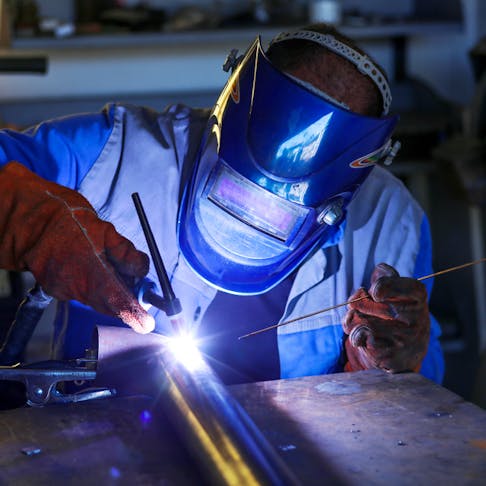Recognizing Welding WPS: Comprehensive Guide for Welders
Recognizing Welding WPS: Comprehensive Guide for Welders
Blog Article
Mastering Welding WPS Specifications: Finest Practices and Techniques for Top Quality Welds
In the world of welding, grasping Welding Treatment Spec (WPS) criteria is an essential component that straight influences the high quality and integrity of welds. Sticking to these standards ensures consistency and integrity in welding results. Nonetheless, accomplishing quality in welds goes past simply understanding the standards; it involves applying ideal practices and methods that elevate the craft to a degree of accuracy and skill that establishes apart the average from the remarkable. As we navigate through the details of welding WPS requirements, revealing key understandings and techniques for attaining top-tier welds will be vital for welders seeking to master their craft and generate welds that stand the test of time.
Recognizing Welding WPS Standards

Assessors depend on WPS paperwork to confirm that welding procedures are being complied with properly and that the resulting welds are of high quality. Engineers make use of WPS standards to develop welding procedures that guarantee the sturdiness and integrity of bonded structures.


Vital Tools for Quality Welds
Understanding welding WPS requirements is necessary for welders to properly make use of the necessary devices required for producing high quality welds. One of the most vital tools for quality welds is a welding machine. The kind of welding device needed relies on the welding procedure being used, such as MIG, TIG, or stick welding. Welding headgears are additionally essential to protect the welder's eyes and face from stimulates, warm, and UV radiation. Additionally, welding handwear covers constructed from heat-resistant and durable products protect the hands from burns and injuries. Magnets and clamps help hold the work surfaces together firmly during the welding procedure, making sure accurate and specific welds. Cord brushes and breaking hammers are important for cleaning up the weld joint prior to and after welding to remove any kind of pollutants that can impact the top quality of the weld. Finally, a gauging tape and angle grinder work tools for guaranteeing correct alignment and preparing the work surfaces for welding.
Trick Methods for Welding Success
To achieve welding success, one must master the key methods necessary for creating top notch welds. Preserving a constant hand and a secure welding setting throughout the process is essential to achieving accuracy and uniformity in the welds. By understanding these vital methods, welders can raise the top quality of their job and accomplish welding success.
Ensuring Compliance With WPS Standards
In addition, keeping detailed documents of welding parameters, devices calibration, and assessment outcomes is crucial for demonstrating conformity with WPS criteria. By diligently sticking to WPS standards, welders can ensure that their job meets the needed top quality levels and contributes to the total success of the welding job.
Troubleshooting Common Welding Issues
When encountered with Read Full Report typical welding issues, identifying the source is essential for effective troubleshooting. One prevalent problem is the visibility of porosity in welds, commonly brought on by contaminants such as oil, corrosion, find more information or wetness. To resolve this, guaranteeing correct cleaning of the base steel prior to welding and utilizing the correct protecting gas can substantially reduce porosity. Another problem regularly come across is absence of combination, where the weld stops working to appropriately bond with the base material. This can come from insufficient heat input or incorrect welding method. Adjusting specifications such as voltage, wire feed speed, or travel speed can aid improve blend. Furthermore, distortion, splitting, and spatter are typical welding difficulties that can be alleviated with appropriate joint preparation, constant warmth control, and selecting the appropriate welding consumables. By completely recognizing explanation these typical welding concerns and their origin, welders can effectively fix problems and achieve top notch welds.
Conclusion
To conclude, grasping welding WPS criteria needs a complete understanding of the standards, utilizing vital tools, and carrying out crucial strategies for effective welds. Guaranteeing compliance with WPS requirements is important for creating high quality welds and preventing common welding problems. By adhering to finest techniques and methods, welders can achieve trustworthy and constant results in their welding jobs.
In the realm of welding, grasping Welding Treatment Spec (WPS) standards is a crucial component that straight affects the top quality and stability of welds.When delving into the world of welding methods, an important facet to comprehend is the value and details of Welding Treatment Spec (WPS) standards. WPS criteria supply a detailed guideline for welding operations, making certain uniformity, quality, and safety and security in the welding process. The kind of welding device required depends on the welding procedure being used, such as MIG, TIG, or stick welding.Attaining welding success via the proficiency of crucial techniques demands a complete understanding and adherence to Welding Procedure Requirements (WPS) requirements.
Report this page